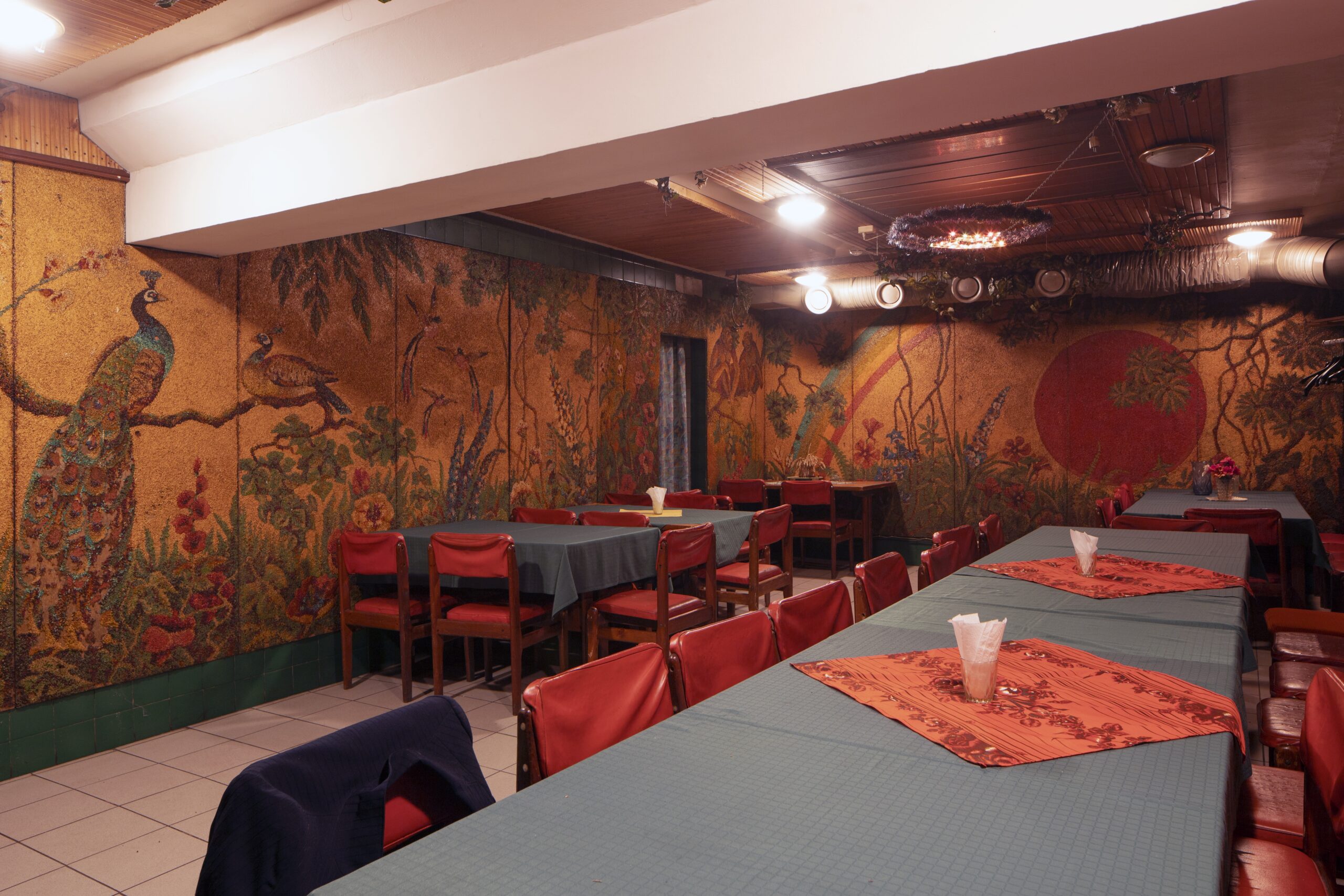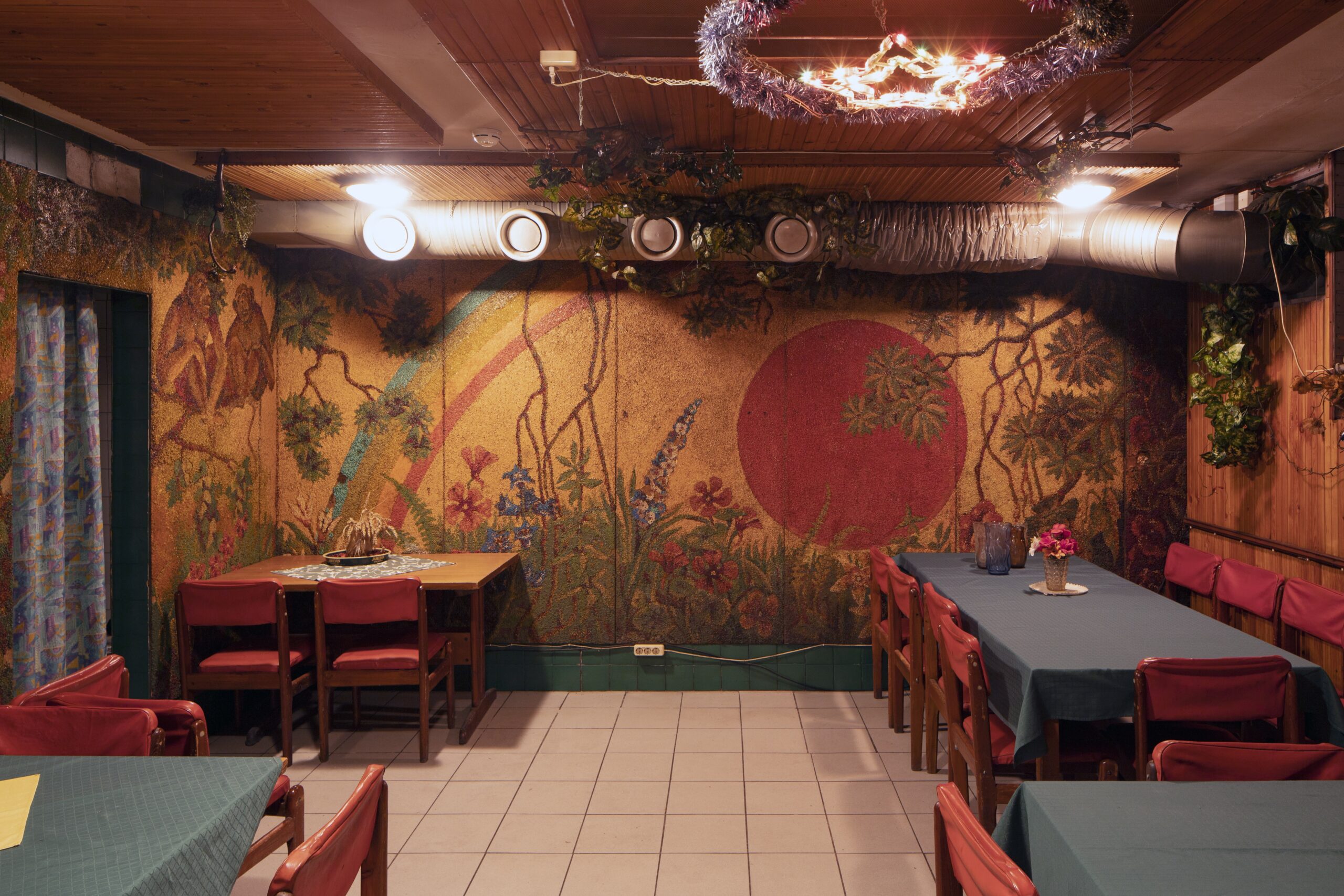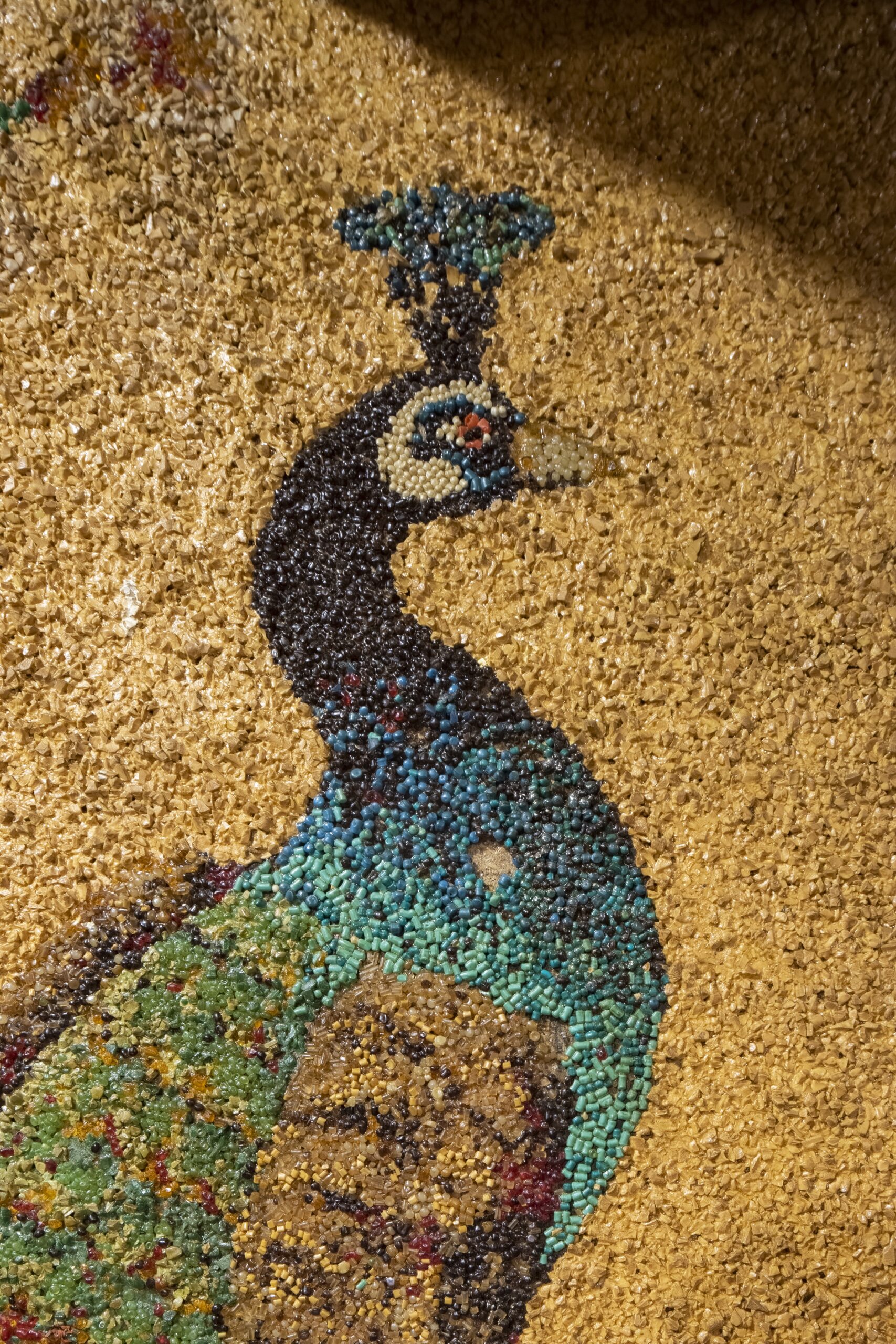Plastic Granule Mosaic in the Tartu Widget Factory Health Centre
Decade of completion: 1980s
Address: Tartu County, Tartu, Kastani 42
Author Mark Kalpin
Plastic granules, varnish
Not listed as a cultural monument
Machinery construction was well off in Tartu during the Soviet Era. A sixth of Estonian machine constructers had converged here, and around 18,000 people had been employed in respective enterprises. The widget factory that operated on the corner of Riia and Kastani Street produced elements for cooling devices, diesel motors’ equipment, and air relays, there has also been mention of secret submarine parts. The industrial complex was constructed gradually, it achieved its current look with a large courtyard in 1960 thanks to architect Ago-Livius Kerge (1933). As the factory was directly subordinate to Moscow – initially the SSR Ministry of Widget Construction, and later the unionwide manufacturing concern Tööstusaparaat – it was no wonder that its scale was no longer in respectful proportion with the current lifestyle of a town like Tartu. In the 1970s, roughly 1500 people worker here. As a comparison, the largest employer today – Olerex – has positions for around 600 employees.
Similarly to other large enterprises, the widget factory had its own artist who was not lacking in daily work: they had to make slogans, signs for the guarantee of job safety, create posters and other notifying signs, design rooms and diplomas for celebrations. Depending on the artistic taste, intelligence, and generosity of the superiors, the artist occasionally had to undertake more ambitious projects. As the factory was subordinate to Moscow, and superiors from the capital had to be hosted regularly, a certain luxury was emphasised in attending to the (important) employees and guests. Such design projects became the responsibility of Ukrainian-origin Mark Kalpin (1926-2014), who had studied in Tartu Art School and worked in the factory for a long time. Kalpin, who actively partook in the art scene of Tartu at the time, is a forgotten name by now, largely due to the fact that he emigrated to the USA at the end of the Soviet Era.
There are two known works of his monumental art in the widget factory: a romantic painting depicting a view over a river in realistic style, initially in one of the production rooms but destroyed by today, and the highly sensational, exotic jungle-themed pannel that has survived in the rooms of the factory’s health centre to this day. The artwork depicts pheasants, plant motifs and monkeys, that according to legend were portrayals of the artist and his assistants. The piece is extraordinary in Estonian context because of its technique, which has also given the name to our exhibition. The mosaic consists of thousands of plastic granules (similar granules were used in the production of umbrellas at the factory), which were first glued onto tiled on the floor, then varnished and placed on the wall. In the 1990s, the room with its extravagant imagery was readjusted to the needs of the bar Sodiaak. It is a legendary establishment, where questionable company parties took place in the 1990s. When the owner realised that the pool room was used with the wrong intentions, it was remade into a banquet hall. The later regulars have been generally a bit shaken-up by time, and the joint’s underground milieu and affordable prices make it a favourable spot for them.
Starting from 2013, the cultural hub named Aparaaditehas (Widget Factory) has been operating on the factory’s premises. The old shell has been skilfully filled with a new interior. The bar Sodiaak’s lease contract will be terminated in a year, after which the area’s gentrification can “successfully” be considered finished. What awaits the zestful granules henceforth is unknown but based on the attitude so far, it is safe to assume that the legacy will be treasured and a suitable leaseholder will be found.
Gregor Taul










